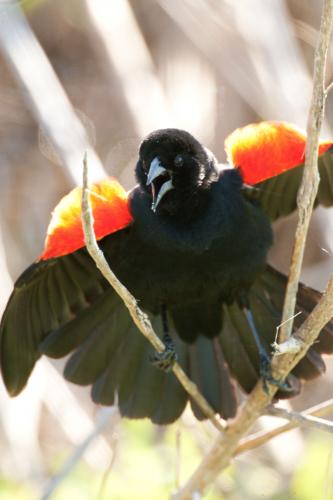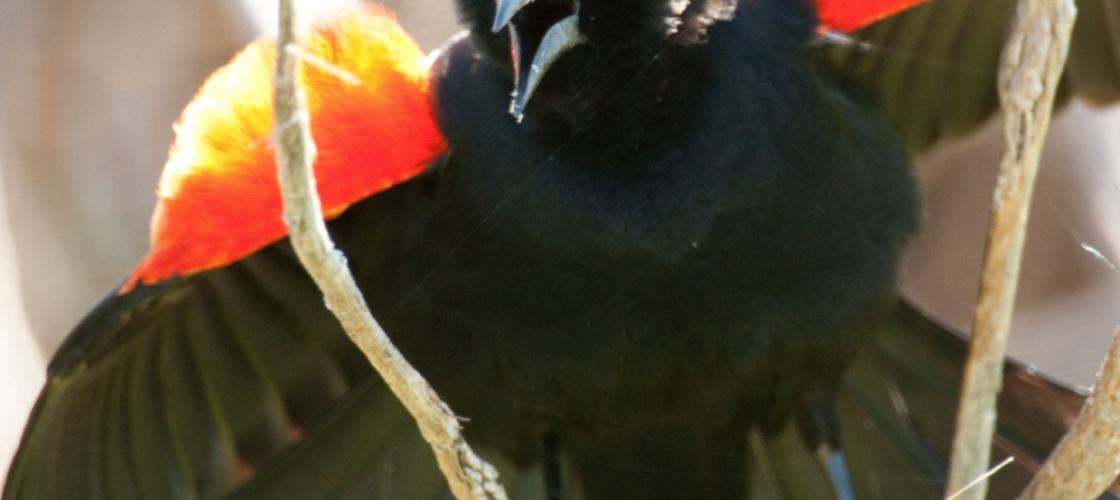A stake-out requires being inconspicuous, but not so for red-winged blackbirds. Showing off and making noise is the main objective of their stake-out.
Male red-winged blackbirds have already staked-out their territories in wetlands and around ponds and lakes. Their red-and-yellow shoulder patches add glints of color to the landscape. Male red-wings won’t hesitate to pump up their color and volume. When other birds invade the red-wing’s territory, he spreads his tail, fluffs his feathers, and belts out the gurgling song--konk-la-ree--about twice as loud as any other bird song.
In February and March, male red-wings travel north from their southern wintering grounds and find good spots for nesting and feeding. They eat seeds at this time, and can endure a cold snap, unlike insect-eaters whose food source is wiped out by a freeze. Before long, the pairs build nests of grasses and mud, weaving them in cattails or shrubs. They lay speckled, pale-green eggs which hatch in eleven days. Red-winged blackbirds nest from the southern Yukon to the Bahamas. Although their populations have declined about 30 percent since the late 1960's, they are still an abundant songbird with an estimated population of 130 million.
You can usually see them perching on cattails near water. The red-winged blackbird’s liquid tunes fill the air and signal a stake-out for survival.
Seeing Red-Wings (Audubon)
- The red-winged blackbird is notorious for being aggressive. Several will often attack a larger bird, such as a hawk or crow, that flies over their nesting area.
- To defend his territory and attract a mate, the male red-winged blackbird perches on a high stalk with feathers fluffed out and tail partly spread. He lifts the leading edge of his wing so his red shoulder patches are prominent, and sings.
- When they are being territorial, it is recommended to stay away from the area for safety.
- Red-winged blackbirds are known to sing in slow, fluttering flight.
- Outside the nesting season, red-wings sometimes roost in huge concentrations.
You can discover more about red-winged blackbirds in our field guide. To discover where to birdwatch for red-wings and other birds in your area and around the state, check out the Great Missouri Birding Trail.


Recent Posts
























